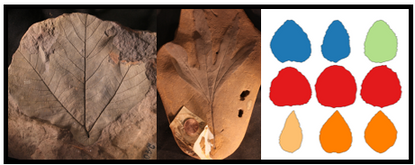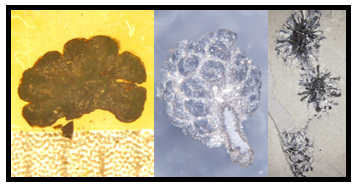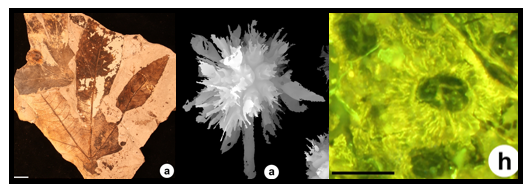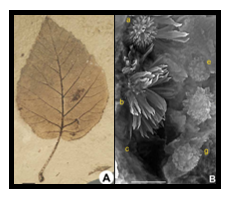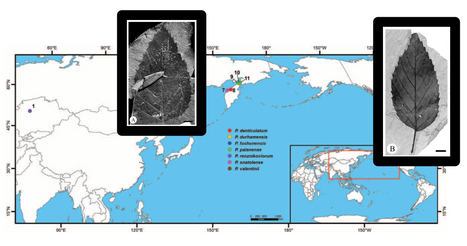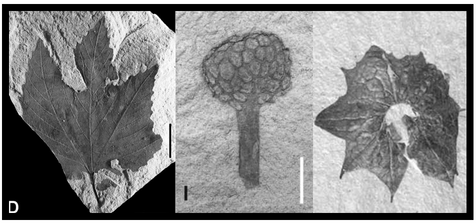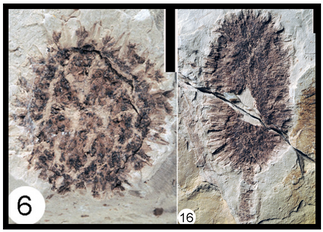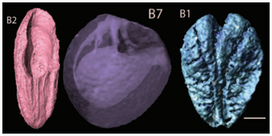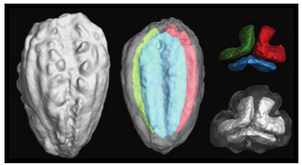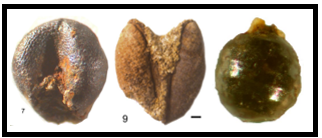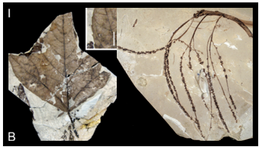Indah B. Huegele
PaleobotanIST
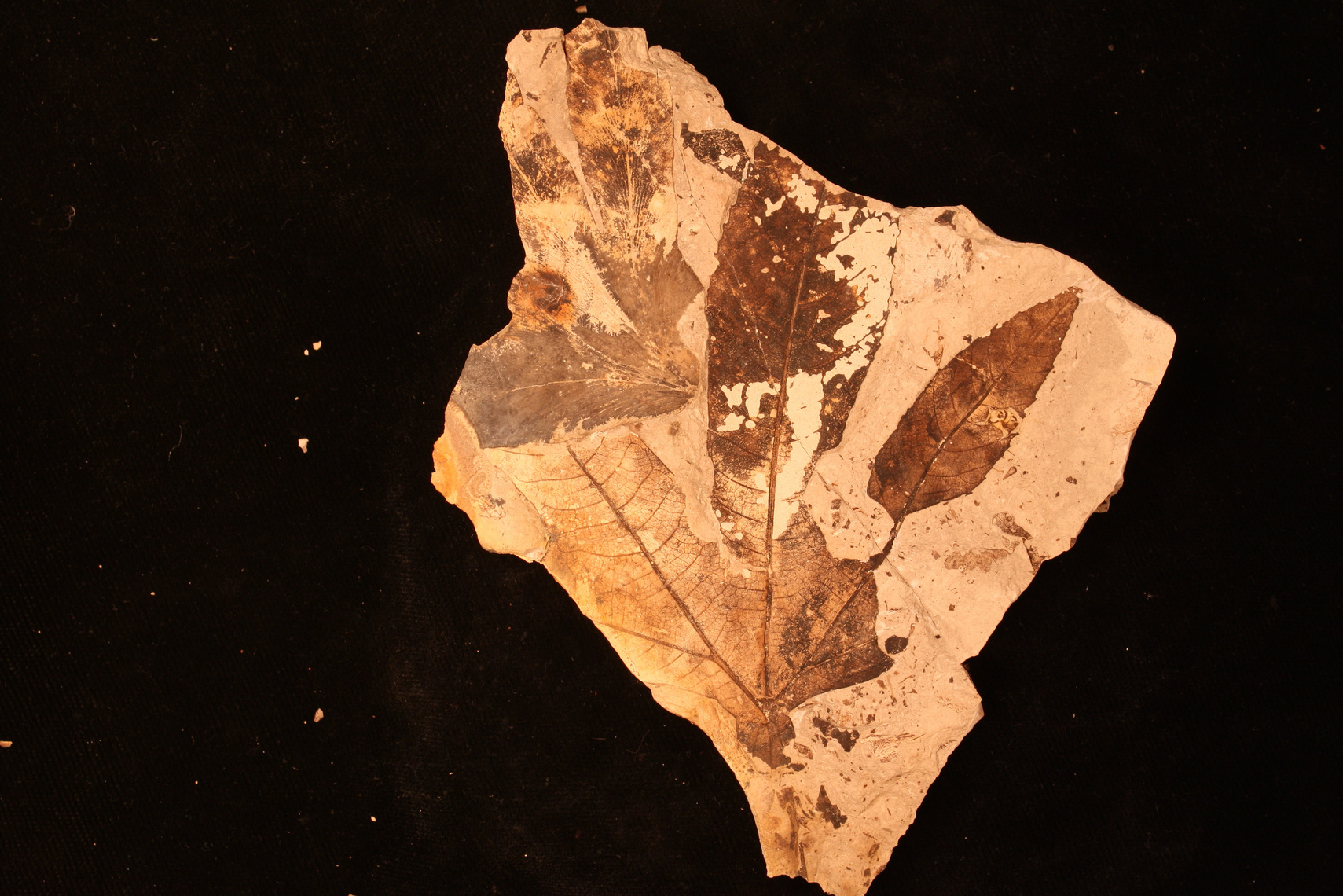
About Me
My Interests
- Fossil sycamores/plane trees (Platanaceae): their evolution and history
- Fossil fruit and seed floras: diversity, size, and dispersal trends through time
- Micro-CT applications in paleontological research and outreach
- Integrating morphological data into phylogenetic analyses
- Efforts to disseminate paleobotany to the general public, especially those of unconventional backgrounds
Education
2023 Doctor of Philosophy University of Florida
2018 Bachelor of Science University of Texas at Austin
Research
An Overview of My Research
Click on the research thumbnails to learn more!
Mid-Cretaceous Platanaceae
Fruits and Seeds
Other Research
Outreach Activities
As someone from a non-traditional, homeschooled background, I am passionate about finding ways to disseminate my field to those of unconventional backgrounds.
I have engaged in paleontological outreach activities for over eleven years. Throughout my career, I participated in numerous tabling events, “pop-up” museums, and volunteer digs aimed towards amateur enthusiasts and the general public. Some of my outreach projects seek to introduce people to paleobotany in unexpected settings (e.g., climbing gyms). I am currently working to help design science kits themed around paleobotany for usage at high schools in the Wind River Reservation. I am also a proud coach for First Tech Challenge.
In 2020, I helped a Thai colleague design and edit the English language portions of a book (Wonders of Petrified Wood) aimed at exploring the history, human impact, minerology, biology, and beauty of petrified wood for a general audience. This book compliments the fossil wood exhibits at the Wonders of Petrified Wood Museum in Sukhothai, Thailand.
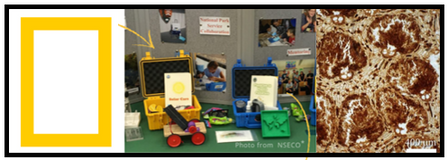
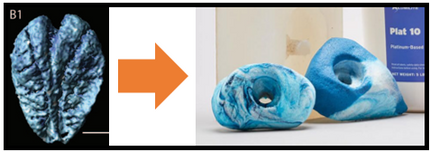
Contact Me
platanus@umich.edu
Highlights
Research Highlights
Click on the research thumbnails to see the journal page!
- What processes drive episodes of rapid phenotypic innovation?
- Our focus will be on the rapid emergence and phenotypic evolution of angiosperms in the Cretaceous.
- We will produce a large phenotypic dataset using novel Machine Learning methods on fossil and modern records.
- New species and occurrences of Macginitiea are recognized from multiple sites in North America.
- Some Macginitiea species have a greater proclivity for developing basilaminar lobes than other species. M. rannii sp. nov. is established as a separate species from M. wyomingensis, which almost never produces basilaminar lobes.
- M. rileyi comb. nov. has impressive basilaminar lobes that can be up to 8 cm long. A new epitype is described from New Mexico.
- Macginitiea lived as far south as Texas and had a transberingial distribution, similar to other platanoids like Platimeliphyllum.
Huegele & Correa Narvaez (2024)
- A new genus, Distefananthus, is named for elongate platanaceous inflorescences from Early Cretaceous of Kansas.
- The fossils may represent a less compressed, earlier form of platanaceous inflorescence.
- These are the oldest records of bisexual inflorescences in the family.
- Fossils of an early Platanaceae with compound leaves, Sapindopsis, co-occur and may belong to the same plant as inflorescences.
- Tetramelaceae, a family of tropical rainforest trees from Malesia, once grew in the Rocky Mountain region millions of years ago.
- New genera are named for the leaves, Punctaphyllum, and fruits, Parvaspicula. CT scans help reveal the anatomy of these fruits.
- Fossils show that the family was much more widespread than previously thought.
- Highlights of the flora include oospores of Characeae (algae), seeds of Cucurbitaceae (cucumber family), and a new genus (Honeytheca) possibly related to Brassicaceae (the mustard family).
- Based on the habits of their living relatives, most of the fruits and seeds were likely animal-dispersed.
- A fossil with unlobed leaves has many features that tie it to living Platanus (hollow petiole base, foliar stipules, teeth, and venation)
- Strange development: some leaves show a rare attempt to form lobes.
- A new genus, Langernanthus, is established for the inflorescences; the leaves of this plant are Platanus-like, but the inflorescences are not.
- Platanaceae was a prominent component of the Republic flora.
- Because living Platanaceae have lobed leaves, some fossils may be difficult to recognize because they have unlobed leaves.
- The presence of Platimeliphyllum in western North America and northeastern China suggests that they migrated over Beringia.
- The cuticle compliments previous records of this genus, but the inflorescences have a different kind of pistillate material.
- A new fruit and seed flora reveals 15 morphotypes, including four new species of Cornales.
- Animal dispersal was likely based on the morphology of the fruits and seeds and the dietary preferences suggested by mammalian dentition
- The average size and range of fruit and seed sizes are greater than that of other Paleocene carpofloras.
- Many species of Platanus from the Miocene of western North America represent a single species, Platanus dissecta.
- Morphology of living Platanus suggests that some proportions, e.g., central lobe length:width, are taxonomically informative.
- Sandstones collected over 100 years ago reveal new findings under CT scan: a rich array of fruits and seeds preserved as molds.
- Many Trinity fruits and seeds have bite marks from small animals; direct evidence of plant-animal interaction is rare!
- The flora contains thermophilic plants and some that are now confined to Asia and/or Malesia. New species are described.
Highlights to projects that are in progress or in review will be added in the future!
